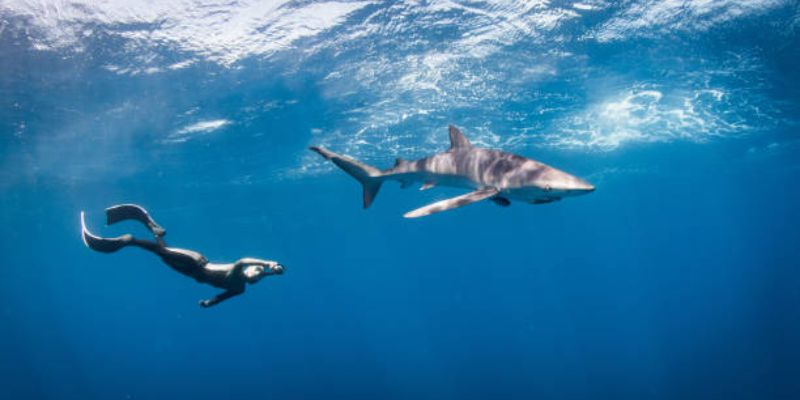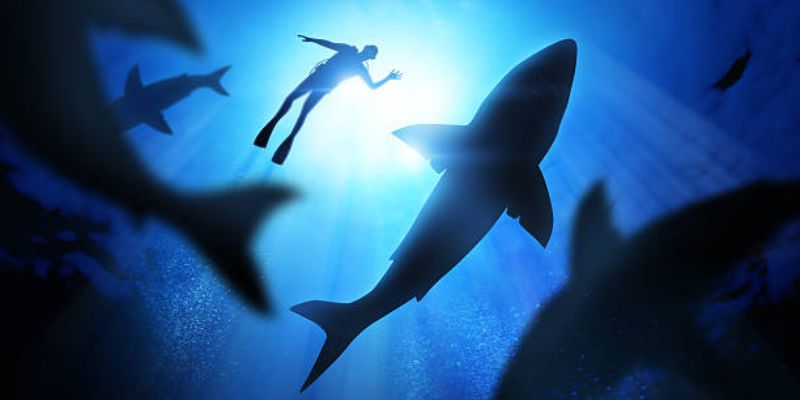What It’s Really Like to Go Shark Diving (Full Breakdown of the Experience)
Most people imagine shark diving as a dangerous stunt only for thrill seekers. In reality, shark diving is one of the safest and most breathtaking ocean experiences you can have when done with professionals.
If you’ve ever wondered what it’s really like to be underwater, face-to-face with a shark, here’s a full, honest breakdown — from preparation to that unforgettable moment of eye contact.
Why Shark Diving Draws So Many Thrill Seekers
There’s something magnetic about shark diving — part fear, part fascination. It offers a rare chance to get close to one of nature’s most misunderstood animals. What used to be viewed as an extreme sport has evolved into a respected eco-tourism activity that supports conservation efforts.

People aren’t diving to prove bravery anymore. They’re diving to understand sharks better, to replace movie myths with real encounters. From cage diving to open-water exploration, the focus is now on safety, education, and awe.
How Shark Diving Actually Works
Step 1 — Preparation and Briefing
The day usually starts with a safety briefing. Divers learn about shark behavior, body language, and how to stay calm in the water. Guides explain how the equipment works — the wetsuit, breathing regulator, and communication signals.
The emphasis is on respect: sharks are wild but predictable when treated correctly. Most tours keep group sizes small so each diver feels guided and secure.
Step 2 — Getting in the Water
When it’s time to dive, participants enter the water either inside a cage or through open descent. The water may feel cold at first, and breathing through the regulator takes a few seconds to adjust. Sound becomes muffled. Movements slow down.
Visibility depends on location — some spots are crystal clear, others slightly murky — but the silence of the ocean quickly takes over.
Step 3 — Encountering the Sharks
This is the moment everyone remembers. Sharks glide effortlessly nearby, sometimes circling curiously. Popular species include great whites, reef sharks, tiger sharks, and bull sharks. Most dives last 20 to 40 minutes.
Sharks rarely act aggressively. In fact, they’re more likely to ignore divers or keep a calm distance. Seeing them move gracefully changes fear into fascination almost instantly.
Step 4 — Returning to the Surface
Once the dive ends, guides help everyone back onto the boat. There’s always a safety check and a short debrief afterwards. The adrenaline rush fades into a sense of peace — many describe it as humbling and transformative.
That quiet awe usually lingers long after you’ve left the water.
Safety and Risks — The Real Truth About Shark Diving
Contrary to myth, shark diving has an excellent safety record. Incidents are extremely rare when handled by certified operators. According to data shared by experts at PADI, divers are statistically safer in a shark cage than on a drive to the marina.

Sharks generally avoid humans unless provoked or baited irresponsibly. Licensed tours follow strict codes to prevent that. Professional guides also use controlled conditions — predictable feeding zones, secure cages, and constant communication — to minimize risk.
Understanding shark behavior is key. They’re cautious, intelligent hunters, not mindless predators. Respecting that makes the dive both safe and awe-inspiring.
What It Feels Like to Be Face-to-Face With Sharks
The Moment of First Sight
The first sighting is unforgettable. You might spot a shadow gliding from the deep, followed by the unmistakable silhouette of a shark. Fear instantly gives way to wonder. Every sense sharpens — bubbles rise slowly, the light flickers, and your heartbeat feels louder than the ocean itself.
The Sharks’ Behavior and Body Language
Sharks move slowly, powerfully, without any wasted effort. They don’t dart toward divers — they circle or pass by, keeping steady eye contact. That calm energy makes you realize how different they are from their movie image. Most display curiosity, not aggression.
Emotional Reactions During and After
Divers often describe feeling both small and deeply connected to the ocean. It’s not about adrenaline alone — it’s about respect. When you finally resurface, there’s a quiet sense of peace that comes from seeing nature so close and realizing sharks aren’t the monsters we’ve been taught to fear.
Where You Can Go Shark Diving Around the World
Shark diving is offered globally, but a few places stand out for clarity, safety, and variety of species.
South Africa — Great White Encounters
Gansbaai and Mossel Bay are world-famous for great white shark cage dives. The cold Atlantic waters offer thrilling yet controlled visibility. Divers stay in steel cages, making it ideal for beginners seeking their first shark sighting.
The Bahamas — Tiger Beach
Known for clear blue water and friendly tiger sharks, Tiger Beach allows open-water encounters with experienced guides. It’s one of the few places where divers can observe multiple shark species together.
Fiji and Australia — Reef and Bull Sharks
Both destinations combine warm tropical water with professional operators. The experience feels more relaxed and accessible, with colorful coral reefs adding visual beauty. Local conservation programs supported by WWF help protect shark populations in these regions.

What You Need to Know Before You Go
Who Can Go Shark Diving
Most tours welcome beginners. Cage diving requires no prior experience, and non-swimmers can still participate if they’re comfortable in the water. However, divers should be in good health and may need medical clearance for deep-water dives.
Equipment and Gear
Operators provide all essential gear — wetsuits, masks, fins, and safety cages. Some divers bring their own GoPro or underwater cameras. The equipment is checked before every trip, and backup systems are always available.
Cost and Booking Tips
Prices vary depending on the location and type of dive. Local trips can start around $200, while international dives may exceed $1000. Booking during the shoulder season (spring or fall) usually offers better rates without overcrowding.
How to Choose a Responsible Operator
Always check that your tour is licensed and follows ethical practices. Look for operators certified by organizations like National Geographic or PADI. A responsible company prioritizes shark welfare, limits baiting, and supports marine research.
By choosing ethical tours, divers directly contribute to shark conservation and ocean health.
Why Shark Diving Changes How You See the Ocean
Shark diving isn’t just about adrenaline — it’s a reminder of how misunderstood these creatures are. Seeing sharks up close replaces fear with respect. It also shows how vital they are to the marine ecosystem, keeping the ocean balanced and thriving.
For many, the experience sparks lifelong advocacy for ocean protection. It proves that coexistence between humans and sharks is not only possible but essential.
What It’s Really Like to Go Shark Diving — The Takeaway
Ultimately, what it’s really like to go shark diving is not terror or danger — it’s awe, silence, and deep respect. The experience changes how people view both sharks and the sea itself. When done safely and responsibly, it’s one of the most powerful wildlife encounters on Earth.
So if you ever get the chance, go prepared, stay calm, and see these magnificent animals for what they truly are — graceful, vital, and extraordinary.
Sources
- Learned practical methods
- Solved my questions
- Inspired new ideas
Popular Reads
Most Viewed
-
![Peak Season Mastery: 10 Brilliant Strategies to Outsmart Tourist Crowds]()
-
Guides And Tips
Peak Season Mastery: 10 Brilliant Strategies to Outsmart Tourist CrowdsSeptember 7, 2025
-
![How to Use Reward Points and Miles to Pay for Tours (and Save Big on Travel Costs)]()
-
Tours And Tickets
How to Use Reward Points and Miles to Pay for Tours (and Save Big on Travel Costs)August 27, 2025
-
![TSA PreCheck Vs. Clear Vs. Global Entry: Which Airport Fast Track Is Right For You?]()
-
Guides And Tips
TSA PreCheck Vs. Clear Vs. Global Entry: Which Airport Fast Track Is Right For You?August 26, 2025











